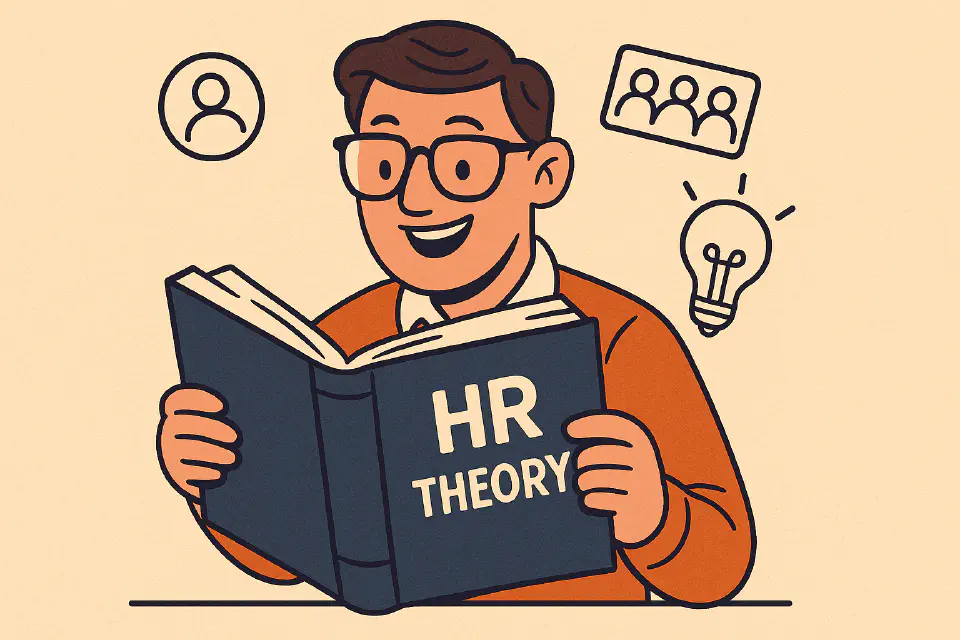
Theoretical & Academic Foundations of HR Roles
HR didn’t emerge from thin air. Today’s roles — from strategic partner to risk manager — are rooted in decades of organizational theory, behavioral research, and management evolution. This page traces those foundations and explains why they still matter.
Origins: How HR Evolved as a Discipline
Modern Human Resources draws on multiple traditions: management science, psychology, economics, industrial relations, and organizational behavior. While HR may feel modern, its roots stretch back over a century.
The Welfare and Personnel Era (Early 1900s–1950s)
- Focus on welfare officers, industrial paternalism, and basic labor relations
- Driven by safety, working conditions, and the growth of unions
The Behavioral Science Turn (1950s–1980s)
- Influenced by Maslow, Herzberg, McGregor, Likert, and others
- Shifted attention to motivation, leadership styles, and employee satisfaction
This era gave birth to organizational development (OD) and the idea that people are not just labor, but contributors to innovation and culture.
The Strategic HR Era (1990s–2000s)
- Ulrich’s 1997 model reframed HR as strategic partner, administrative expert, employee champion, and change agent
- Increasing emphasis on aligning HR to business goals, driving transformation, and using metrics
The Current Phase: Complex, Integrated, Evidence-Based
- HR today incorporates behavioral economics, data science, DEI research, systems thinking, and agile practices
- Roles are specialized, tech-enabled, and outcome-oriented — from workforce planners to people analytics leaders
Core Theoretical Approaches Behind HR Practice
HR is not just practice-based — it’s theory-informed. A variety of academic schools have shaped the way organizations manage people. Understanding these foundations gives HR professionals tools to reflect, challenge assumptions, and redesign systems more effectively.
1. Classical Management Theory
- Emphasizes hierarchy, specialization, and control
- Key figures: Frederick Taylor (Scientific Management), Henri Fayol, Max Weber
Implication for HR:
- Origins of job design, division of labor, and formal HR policy
- Emphasis on structure, predictability, and top-down accountability
2. Behavioral Science and Human Relations School
- Emphasizes motivation, needs, relationships, and psychological factors
- Key thinkers: Elton Mayo (Hawthorne Studies), Abraham Maslow, Douglas McGregor
Implication for HR:
- Shaped practices around engagement, feedback, leadership styles, and well-being
- Gave rise to concepts like intrinsic motivation and psychological safety
3. Contingency Theory
- Argues that there is no “one best way” — effectiveness depends on fit with environment
- Key figures: Burns & Stalker, Fiedler, Lawrence & Lorsch
Implication for HR:
- Encourages flexible HR systems that adapt to strategy, culture, size, and industry
- Leads to differentiated approaches (e.g. talent strategies in startups vs. government)
4. Systems Theory
- Views the organization as an open system of interrelated parts
- Key thinkers: Ludwig von Bertalanffy, Katz & Kahn
Implication for HR:
- Promotes holistic thinking: HR is not an island, but connected to finance, operations, IT, etc.
- Supports integrated HRIS, feedback loops, and process alignment
Key Models and Frameworks That Shaped HR Roles
Theoretical foundations are translated into practice through models. These frameworks shape how HR defines its purpose, structures its work, and aligns with business.
1. Ulrich’s HR Model (1997)
Perhaps the most influential modern model of HR.
Four Roles:
- Strategic Partner
- Change Agent
- Administrative Expert
- Employee Champion
Evolution: Later versions added roles like Human Capital Developer and Credible Activist.
Impact:
- Popularized the HR Business Partner model
- Encouraged alignment of HR with strategy and transformation
- Criticized for underestimating people experience and overemphasizing business alignment
2. SHRM’s Competency Model
Developed by the Society for Human Resource Management (SHRM), this model identifies key behavioral and technical competencies across levels.
Examples of Core Competencies:
- Relationship Management
- Consultation
- Global & Cultural Effectiveness
- HR Expertise
- Ethical Practice
Use: Supports HR certification and capability development globally.
3. CIPD’s Profession Map
Built by the UK-based Chartered Institute of Personnel and Development.
Key Principles:
- Purpose over process
- Evidence-based practice
- Principles-led decision-making
Focus: Places emphasis on insight, values, and outcomes — not just tasks.
4. The Cynefin Framework (Snowden, 1999)
Originally developed for knowledge management, now widely used in HR and leadership.
Why relevant?
- Encourages adaptive HR responses based on whether a situation is simple, complicated, complex, or chaotic
- Helps HR professionals navigate ambiguity and design fit-for-context solutions
Final Thought
Theory is not the opposite of practice — it’s what helps us practice better.
Modern HR draws on a rich mix of traditions: strategic alignment, human motivation, ethical leadership, adaptive systems, and cultural context.
Understanding these foundations allows HR professionals to act with confidence, reflectiveness, and clarity — not just doing what’s always been done, but understanding why it works.